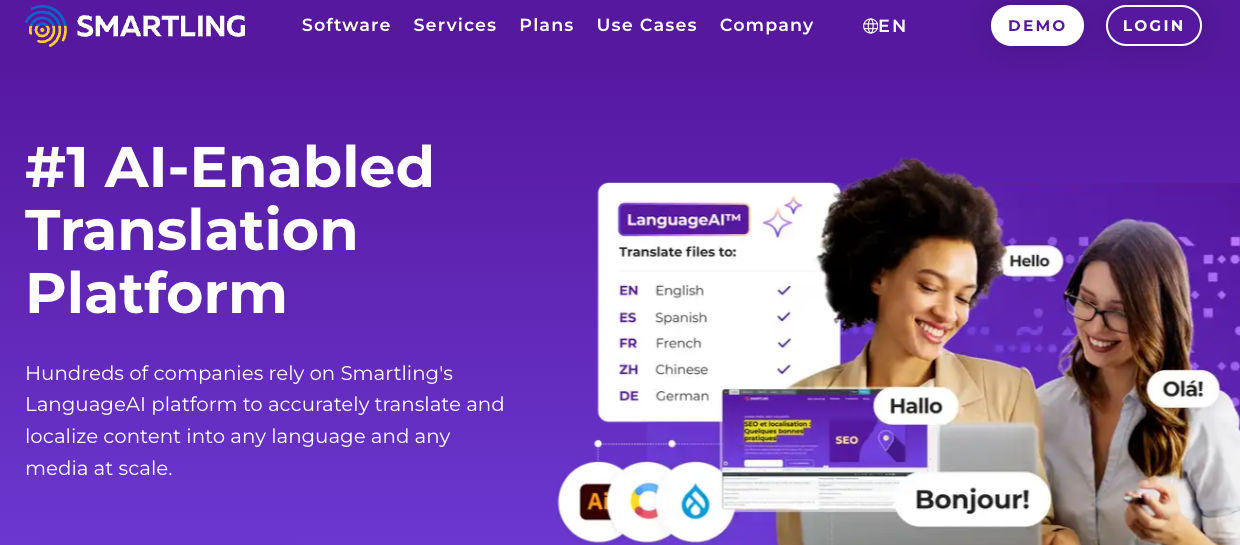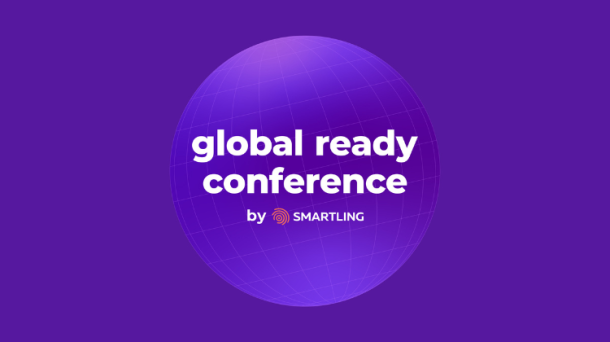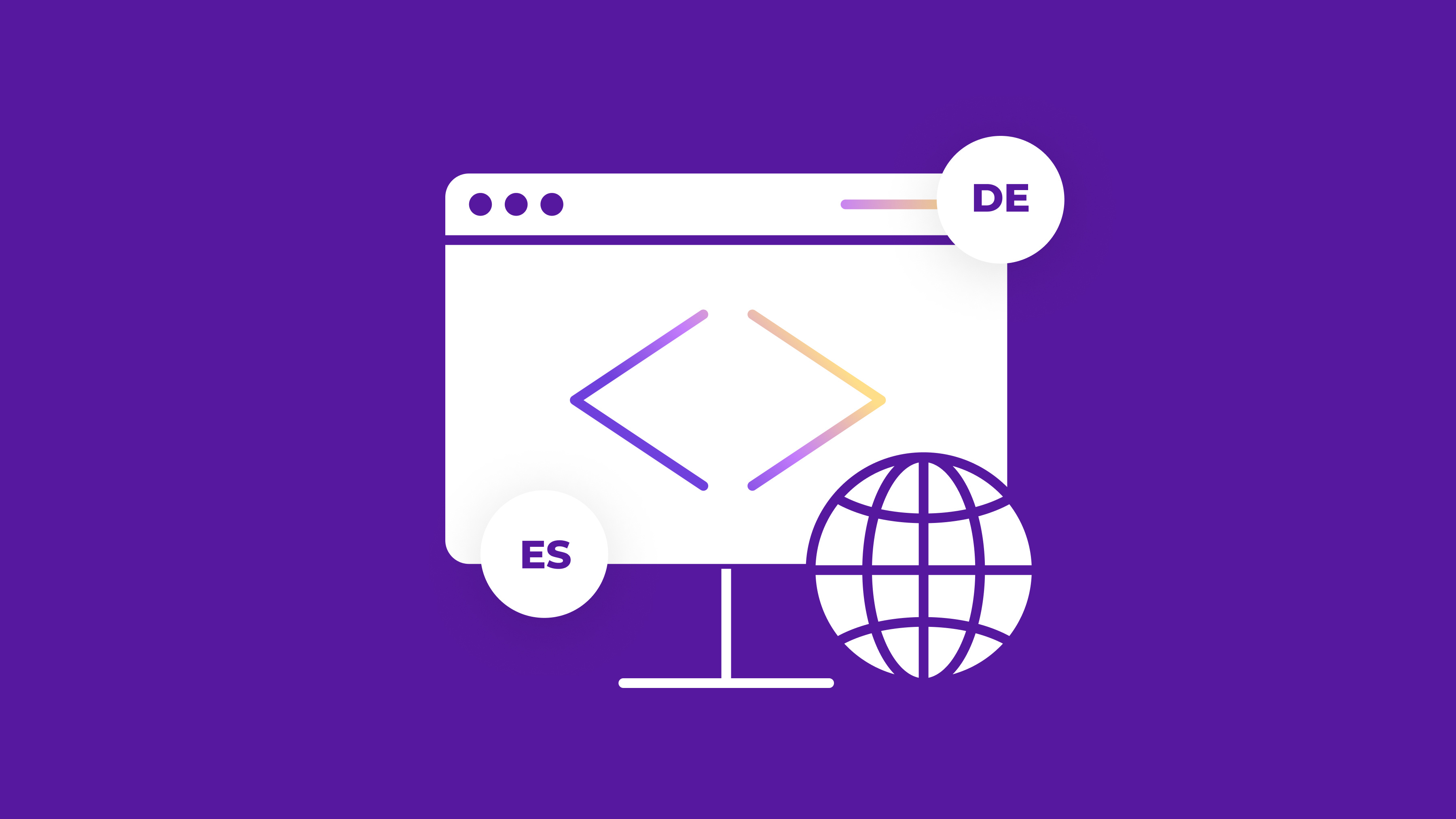Consumers want to connect with people, not companies. When brands enter new markets, presenting the same global message across the board won’t cut it. Audiences from different cultures may see your marketing and think that it seems foreign and doesn’t meet their needs.
Multilingual marketing strategies turn global products and services into localized experiences for each culture. They help you, as a location manager or executive, lead your brand into international markets and connect personally with global audiences for increased brand awareness, reach, and sales.
In this article, we’ll discover how multilingual marketing can improve your brand’s strategy, how to build a plan, and how you can overcome common challenges. We’ll then learn how an all-in-one solution can help you launch your business in new local markets.
The power of multilingual marketing
If you’ve ever been to a new city in a big country, you’ve probably seen a tour bus—think of the double-decker red buses. Imagine that you walk onto one and find that the tour is only in the local language, which you don’t know.
Because you don’t understand what’s going on, you immediately feel out of place. Even though the tour company says that the experience was made for you, it doesn’t seem like it’s for you if you can’t enjoy it.
In many ways, that’s how it feels when a company tries to reach an audience in a different country, like China, with the same strategy and messaging they use for their English-speaking American, British, or Australian audience.

Just like a bus tour company aims to provide a tailored experience for tourists, your company should personalize each target audience’s customer experience for their native language, with adaptations for cultural nuances. (Source)
You won’t convey a successful first impression if you use the same global message to connect with all of your target markets. You might be able to quickly translate your website content into Chinese Mandarin and get the point across, but you’ll likely miss cultural nuances—and you may even offend Chinese audiences with the wrong message.
Instead, a multilingual marketing strategy should involve implementing localization to create a consistent brand message for each local audience. You need to incorporate cultural nuances, complexities, and motivations to influence how local target audiences perceive your message.
When you reach an audience as a local business rather than as a foreign enterprise, you’re more likely to connect with them, increase your reach, and convert touch points into sales.
Developing a multilingual marketing strategy
Most people agree that a more personalized and local approach to communication will improve marketing. So how do you build a winning strategy?
Multilingual marketing strategies should incorporate the following three principles:
- Speed: You should be able to quickly produce and translate your marketing materials to avoid delayed communication with your target audiences and regions.
- Accuracy: Your translated content should connect with your customer base without fail. That means producing error-free copy that conveys the exact meaning you intend to communicate from your source text.
- Affordability: If you’re going to scale your brand across multiple languages and audiences, you must find a way to sustainably produce translated content and localized materials. All three of these principles were almost impossible to apply just a few years ago. You could have fast and budget-friendly translations, but you would have to sacrifice accuracy. However, thanks to technological advancements in the localization industry, teams and brands can finally achieve all three.
Implementing a localization strategy and overcoming challenges
So how do you maintain speed, accuracy, and affordability all at once? You can start by leveraging both AI and human experts.
Today’s AI technology, like machine translation (MT), produces translations at lightning speed. For example, Smartling’s Neural Machine Translation Hub selects the right MT engine to translate billions of words per second for your project. This technology makes localized translation scalable without the long, expensive, tedious process that traditional human translation used to involve.
Then, with Smartling’s translation management system, teams can use more efficient workflows to produce localized marketing translations. By using Smartling’s computer-assisted translation (CAT) tool to provide in-context translations for landing pages and similar materials, linguists can also ensure that localized translations hit the mark for each local audience and demographic.
Smartling’s expert human translators are local and speak the native language. They know the deep histories that influence marketing reactions and decisions in other cultures. These teams can more effectively incorporate linguistic and cultural nuances, like idioms and shifting trends, because they belong to the people group you’re targeting. Over time, these translators also inform translation memory with localized words and phrases so that MT inputs the correct terms in each language for increased consistency and improved speed.
You can apply these principles to multiple use cases, such as:
- Search engine optimization (SEO) processes, like writing meta descriptions and finding multilingual SEO keywords through keyword research
- Social media copy on LinkedIn, Instagram, and similar platforms
- Online content creation
- Localized web pages like landing pages and product pages
- Email marketing copy
- Brochures, newsletters, and printed materials
- Online marketing campaigns like Facebook ads and giveaways
- Digital marketing influencer campaigns like endorsements and promotions
- Market research for local audiences to understand behaviors in metrics If you set your tech and service stack up for speed, accuracy, and affordability, you can immediately streamline your multilingual marketing efforts.
Download our Ultimate Guide to Translating Your Marketing Materials for more information.
Finding the right mix of human and AI translations
By using tools that focus on the three principles of sustainable marketing localization, you can lead a successful multilingual marketing approach. The best way to improve your localization workflow’s efficiency is by taking an AI- and human-powered approach. In this process, AI tools and human experts work together to create marketing communications that connect with customers at scale.
While MT produces fast, accurate, high-quality translations, human linguists provide professional insight into target audiences based on the cultural nuances and shifting trends that ultimately drive their emotions and actions. Expert human translators also implement transcreation, which involves adding new content to more effectively convey your intended message for each culture.
You can only incorporate optimized technology and translation services by choosing a tool and service that can do it all. You don’t have to juggle different solutions and workflows—instead, you can create localized content all in one place.
For example, Vitamix used Smartling’s all-in-one platform to lead its global marketing efforts by creating a consistent brand voice across multilingual markets. Let’s take a deeper look at Vitamix’s story.
Success story: Vitamix’s multilingual marketing approach
Vitamix has been in business for over 100 years, providing blending solutions to kitchens worldwide. As a brand that operates in 130 countries, it needed a way to produce marketing content in over 11 languages.
The challenge was that Vitamix needed to create a consistent brand voice to market its product across different cultures.
Vitamix partnered with Smartling to produce localized content at scale. The company also used Smartling’s Global Delivery Network so that each customer received a localized version of the product page.
According to Vitamix’s marketing specialist, Maximilian Loeffler, “the biggest thing that the Smartling solution has done is allow us to maintain a consistent brand voice through layers of complexity like launching in different markets and different languages—and doing all of this extremely quickly.”
Because Smartling helped Vitamix improve its multilingual marketing strategy, Vitamix’s ad spend return increased by 37%. The company can now confidently target multilingual audiences, regardless of their language or culture.
Smartling’s role in a successful multilingual content marketing strategy

Use Smartling’s tools and professional services to build a multilingual marketing strategy. (Source)
Engaging customers in their native languages can enhance your brand’s reach and resonance. Smartling offers the tools and services you need to create an effective multilingual marketing strategy in today’s globalized market. Our comprehensive localization solutions and multilingual content management system enable brands to craft and deliver translated, culturally adapted marketing messages, driving deeper engagement, more website traffic, and higher loyalty across global markets.
Not only does Smartling offer everything you need for multilingual marketing, but we also work with your tech stack. You can easily integrate our platform with the tools you already use, such as Braze, Dispatch, and HubSpot.
Book a meeting today to learn how Smartling can help you reach more local markets on your customers’ level.

.jpg)





